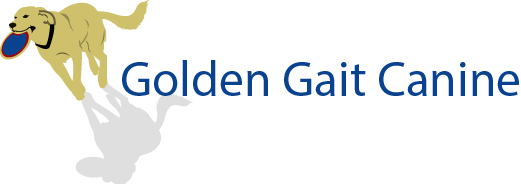Where are you located?
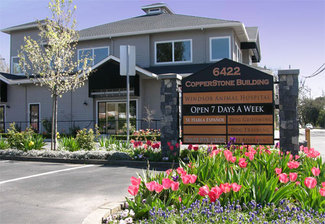
You can seek out hydrotherapy, low level laser therapy, receive a customized exercise program, and much more for your pet at Windsor Animal Hospital in Santa Rosa.
Feel free to call us at 707-838-3031 to schedule an appointment.
6422 Old Redwood Hwy
Santa Rosa, CA 95403
Before you arrive at your first appointment, we will need your pet's most recent medical records, any diagnostics (radiographs, bloodwork, etc.), and proof of up-to-date vaccines. We are happy to call your vet for this information; when you schedule your appointment, let us know who your regular veterinarian is. Feel free to call us at the number above or email us at [email protected] with any questions.
Feel free to call us at 707-838-3031 to schedule an appointment.
6422 Old Redwood Hwy
Santa Rosa, CA 95403
Before you arrive at your first appointment, we will need your pet's most recent medical records, any diagnostics (radiographs, bloodwork, etc.), and proof of up-to-date vaccines. We are happy to call your vet for this information; when you schedule your appointment, let us know who your regular veterinarian is. Feel free to call us at the number above or email us at [email protected] with any questions.
What is Animal Physical Rehabilitation?
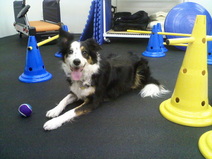
© 2010 GoldenGaitCanine
Animal Physical Rehabilitation helps animals with dysfunction, injury, pain or physical abnormalities through the application of physics, biomechanics, anatomy, physiology, and psychology.
Almost everything used in traditional human physical therapy clinic can be applied to animals. Much of Animal Physical Rehabilitation involves developing creative ways to safely “trick” an animal into performing an exercise or essential daily life activity: eating drinking, eliminating; in order to promote strength or body awareness.
Various modalities and treatments are used to help your pet and can include simple tasks such as learning how to eat standing up, practicing sitting and lying down properly, or turning in a circle. More complex tasks are incorporated as your pet becomes stronger.
The most well known treatment modality is hydrotherapy (water walking in an underwater treadmill or swimming in a therapy pool), but other modalities may be recommended. Things such as low level laser, massage therapy, transcutaneous electro-stimulation, acupressure and thermal therapy are all potential recommendations. Oftentimes Rehabilitation patients are referred for Acupuncture to help facilitate the healing process, provide pain management and manage other underlying disease processes.
Why should a certified Rehabilitation Practitioner be helping my pet?
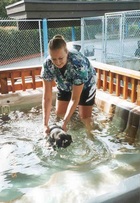
© 2010 GoldenGaitCanine
In the state of California, non-veterinarians are legally allowed to perform Animal Physical Rehabilitation only under the direct supervision of a California licensed Veterinarian. Veterinarians are not required to have specialized training but should understand any specialty service they are to be supervising.
Physical rehabilitation programs only accept applicants and award certifications to licensed veterinarians, physical therapists, registered veterinary technicians, or physical therapy assistants. For this reason we believe it is in the clients and patients best interest to receive physical rehabilitation services from a certified practitioner (CCRP, CCRT or CCRA). We also feel having a veterinarian who is familiar with your pets medical needs is important in the event medical intervention or recommendations are needed.
Physical rehabilitation programs only accept applicants and award certifications to licensed veterinarians, physical therapists, registered veterinary technicians, or physical therapy assistants. For this reason we believe it is in the clients and patients best interest to receive physical rehabilitation services from a certified practitioner (CCRP, CCRT or CCRA). We also feel having a veterinarian who is familiar with your pets medical needs is important in the event medical intervention or recommendations are needed.
What conditions can benefit from Rehabilitation and Pain Management?
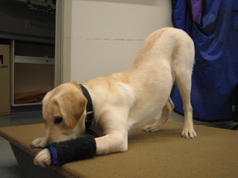
© 2010 GoldenGaitCanine
- Osteoarthritis
- Weight management
- Orthopedic surgical procedures (TPLO, Extracapsular, Patellar luxation, Fracture repair, etc.)
- Neurological disorders
- Conservative treatment for Dysplasia, Osteochondrosis (OCD), Cruciate ligament tears
- Congenital malformations
- Neurologic Injury (fibrocartilagenous embolism or trauma)
- Intervertebral Disc Disease (Spondylosis, arthritis)
- Degenerative myelopathies
- Scar Tissue
- Soft Tissue injuries
- Muscle, Ligament, and Tendon injuries or strains
- Tendonitis
- Oncology (in relation to compensatory conditions)
- Conditioning for competitive/performance events
Is Physical Rehabilitation right for my pet?

© 2010 GoldenGaitCanine
Pets of any age can benefit from a Rehabilitation program. If you think your pet is slowing down, not moving around the house the way they used to, or never fully recovered from an injury; physical rehabilitation may help. Please keep in mind YOU will be required to participate in the treatment plan. At home exercises performed by you and your pet are vital for a successful outcome.
As the guardian for your animal, you are an advocate for medical care and need to ask the who/what/when/where/why questions of your Veterinary team. We are always more than happy to explain the rehabilitation process if there are concerns along the way.
As the guardian for your animal, you are an advocate for medical care and need to ask the who/what/when/where/why questions of your Veterinary team. We are always more than happy to explain the rehabilitation process if there are concerns along the way.
Can't my pet just swim in a pool or lake for exercise?
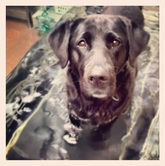
Yes, but often times the condition affecting the animal can become worse from improper exercise routines. The underwater treadmill is a controlled exercise environment where walking speed, water temperature and water depth can all be controlled. The patient may also be given adequate rest periods if they are tired, facilitating optimal conditioning or appropriate rehabilitation from an injury. The therapist also helps to adjust therapy sessions based on how the patient is doing.
Most patients participating in aquatic therapy are already out of shape and swimming in a pool or lake requires more cardiovascular strength and endurance than is available.
Swimming in a hydrotherapy pool may be effective for some conditions, but again several factors are unable to be controlled during a free swim. In lakes, the terrain under the water can pose dangers and water temperatures may be too cold for some patients.
Most patients participating in aquatic therapy are already out of shape and swimming in a pool or lake requires more cardiovascular strength and endurance than is available.
Swimming in a hydrotherapy pool may be effective for some conditions, but again several factors are unable to be controlled during a free swim. In lakes, the terrain under the water can pose dangers and water temperatures may be too cold for some patients.

